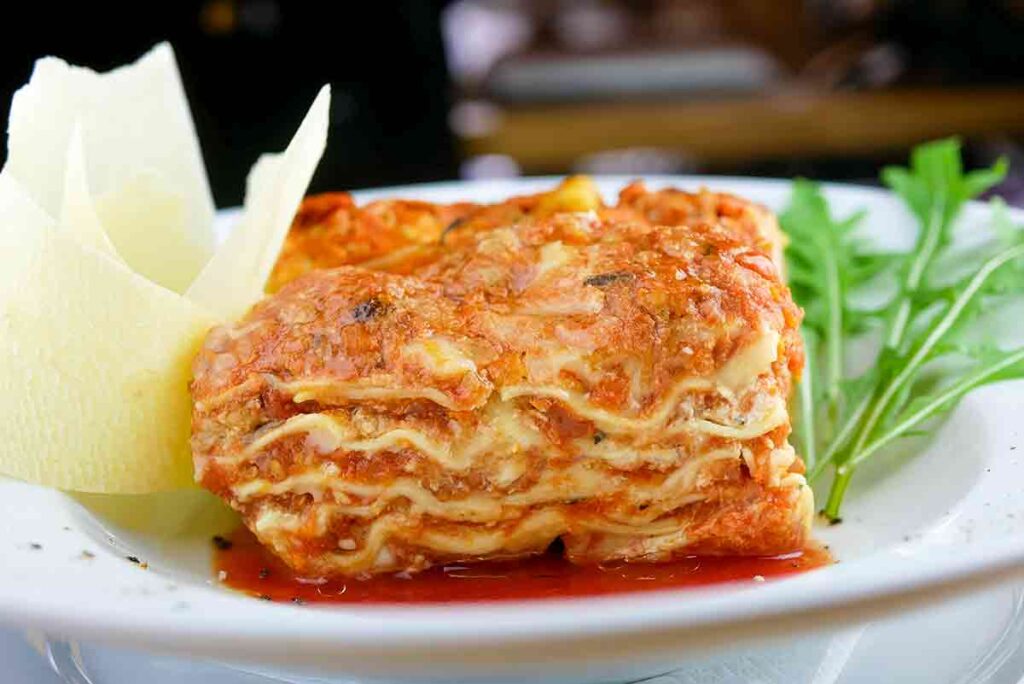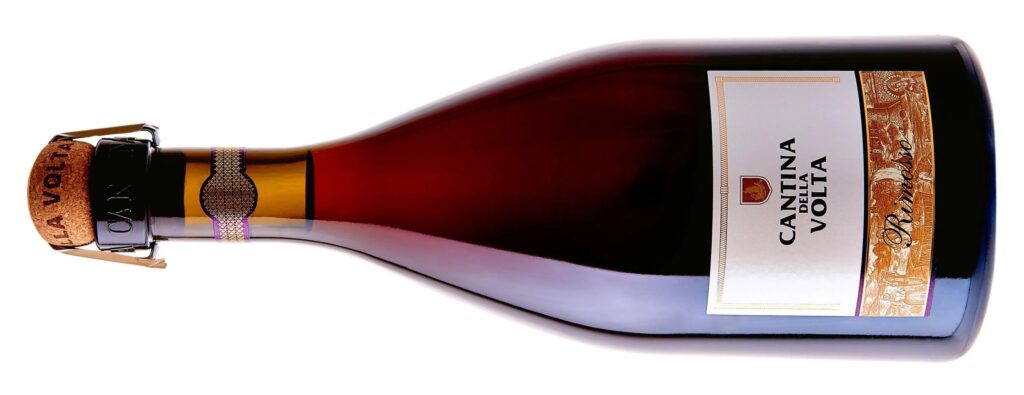Lasagna
I consider myself lucky because my dad, Maurizio, and even before him, my grandfather Eldo, have always made homemade pasta: tagliatelle, lasagne, spaghetti…
However, lasagna holds a special place for me: the homemade ragù my dad makes and the homemade fresh pasta create a unique experience.
Here’s my recipe, but don’t tell my dad!
Recipe “Lasagna”
Ingredients for the Lasagna
- 250 g pre-made lasagna sheets (for those who don’t have time to make fresh pasta)
- 400 g béchamel sauce
- Grated cheese to taste
Ingredients for the ragù
- 150 g diced pancetta
- 1 carrot
- 1 onion
- 1 celery stalk
- 500 g ground beef
- 200 ml red wine
- 400 ml tomato purée
- 200 ml milk
- Extra virgin olive oil as needed
- Fine salt to taste
- Pepper to taste
Ingredients for the béchamel
- 500 ml milk
- 30 g butter
- 2 tbsp flour
- 1 tsp fine salt
- Nutmeg to taste
Ingredients for the topping
- 150 g Parmigiano Reggiano PDO
- Butter as needed

Preparing the Lasagne
I always start the ragù with a step I love: I put the pancetta in a pan by itself and let it brown over high heat until it begins to melt and release its aroma. Then I add a drizzle of olive oil and the classic trio—finely chopped celery, carrot, and onion. I stir everything gently, let it sauté for a few minutes, and enjoy the delicious aroma filling the kitchen.
Next comes the ground beef: I break it up a bit with my hands as I add it to the pan to help it cook evenly. I stir until it’s well distributed. After about 5 minutes, I pour in the red wine and let it evaporate for another 5 minutes.
Once the wine is absorbed, I add the tomato purée, season with salt and pepper, and stir well. Then I lower the heat, cover with a lid, and let it cook slowly for at least an hour and a half. This is when the ragù really develops—thick, rich, and full-bodied.
In the last few minutes, I add a bit of milk: it makes the ragù creamier and balances the tomato’s acidity. If needed, I cook it 10 minutes more until it reaches the texture I want—soft, velvety, almost spoonable.
Meanwhile, I prepare the béchamel. I heat the milk in one saucepan while melting the butter in another. Once melted, I add the flour and whisk, ensuring no lumps. Then, I gradually pour the hot milk, still whisking, and let it simmer gently until it thickens. In the end, I season with salt and a good grating of nutmeg—I can’t do without it.
When everything is ready, it’s time for the best part: assembling the lasagna. I spoon some ragù into the bottom of a baking dish, then lay down the first sheet of pasta. I cover it with more ragù and béchamel, letting it slide generously over the surface. A sprinkle of grated cheese—Parmigiano, of course—and then repeat: pasta, ragù, béchamel, cheese. Layer by layer, finishing with a final top layer rich with sauce and cheese for a golden, irresistible crust. I bake it at 180°C (350°F) for about 40 minutes. While the lasagna cooks, the whole house fills with the scent of celebration and home.
Wine pairings
When it comes to wines to pair with Bolognese lasagna, we have an abundance of choices—almost too many! But here are my top 3 favorites:

Barbera d’Asti DOCG – Cascina Castelet (Piedmont):
I like to call this a “family wine”—the kind that makes everyone happy. Its fruity bouquet is striking, and its freshness perfectly balances the dish’s richness.
Lambrusco di Sorbara “Rimosso” – Cantina della Volta (Emilia-Romagna):
Here we go for a region-to-region pairing—almost traditional. Lambrusco is a staple in my wine cellar. This one, with aromas of wild strawberries and red currants, is a perfect match for lasagna. It’s a must-try!


Cirò Rosso Doc “Segno” – Librandi (Calabria):
Let’s travel down to Calabria and pair our lasagna with Cirò. Winey and bold, with notes of fruit, violet, and Mediterranean spices—it’s a wine that truly elevates the dish.